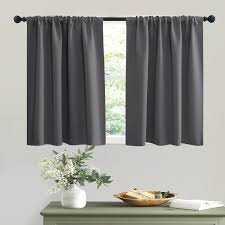Windows bring natural light and fresh air into our homes, but they can also let in unwanted heat, glare, and UV rays. That’s where awnings for windows come in. These practical and stylish additions not only improve curb appeal but also enhance comfort and reduce energy costs. Whether you’re renovating your home or upgrading your outdoor spaces, window awnings are a smart investment.
What Are Window Awnings?
Awnings for windows are protective coverings made from fabric, metal, or polycarbonate that extend outward from the exterior wall. They shield windows from direct sunlight, rain, and harsh weather while adding an architectural touch to your property. Available in various designs and materials, awnings can be customized to suit both modern and traditional homes.
Benefits of Window Awnings
1. Energy Efficiency
By blocking the sun’s rays before they hit your windows, awnings help keep your indoor spaces cooler. This reduces the need for air conditioning in summer, lowering energy bills significantly.
2. UV Protection
Direct sunlight can fade furniture, flooring, and curtains. Awnings act as a shield, protecting your interiors from harmful UV rays and extending the life of your home décor.
3. Weather Protection
Rain, wind, and snow can damage window frames over time. With a sturdy awning, you add an extra layer of protection, reducing maintenance costs.
4. Enhanced Comfort
Window awnings minimize glare on screens and create a cooler, more comfortable living environment. They also allow you to keep windows open for ventilation without worrying about rain entering.
5. Aesthetic Appeal
From classic striped canvas to sleek aluminum designs, awnings come in many styles. They can complement your home’s exterior, boosting curb appeal and overall property value.
Types of Window Awnings
-
Fabric Awnings – Lightweight, colorful, and versatile. They offer a soft, decorative look and can be retractable for flexibility.
-
Metal Awnings – Durable and low-maintenance, ideal for long-term protection against weather.
-
Polycarbonate Awnings – Transparent and modern, allowing natural light in while blocking UV rays.
-
Retractable Awnings – Can be extended or retracted depending on the weather, offering maximum control.
-
Stationary Awnings – Fixed in place, providing continuous protection and a permanent design feature.
Choosing the Right Window Awning
When selecting an awning, consider:
-
Climate – For hot, sunny areas, UV-resistant fabrics are best. For heavy rain or snow, go for strong metal or polycarbonate.
-
Style – Match the awning design to your home’s architecture for a seamless look.
-
Size – Ensure the awning extends far enough to provide proper shade without blocking natural light completely.
-
Functionality – Decide between retractable or stationary models depending on your flexibility needs.
Maintenance Tips
-
Clean fabric awnings regularly with mild soap and water to prevent mold and dirt buildup.
-
Inspect metal awnings for rust and repaint if needed.
-
Clear leaves and debris from the top to maintain water flow.
-
Retractable awnings should be closed during storms or heavy winds to avoid damage.
Final Thoughts
Installing awnings for windows is more than just a design upgrade—it’s a functional solution that improves comfort, saves energy, and adds value to your home. With a wide variety of materials, styles, and features available, you can easily find the perfect awning to suit your needs.


